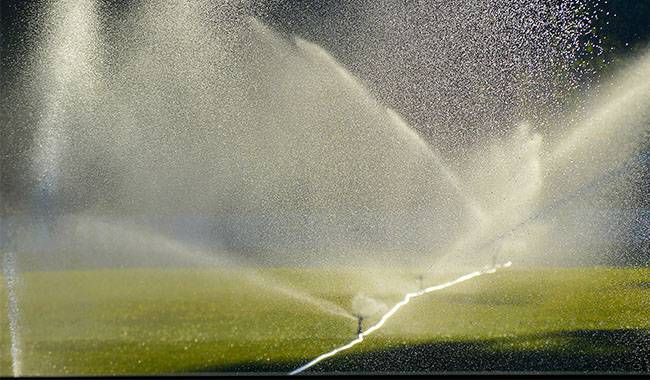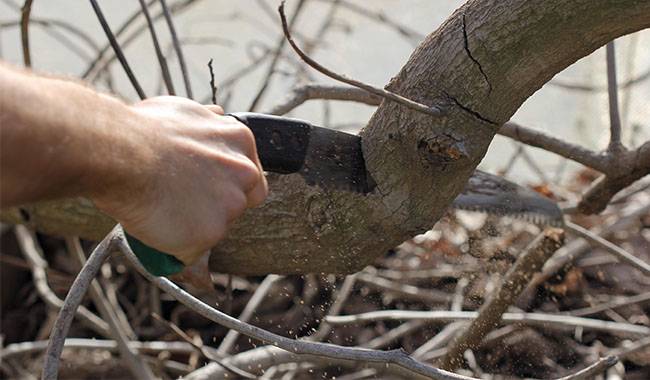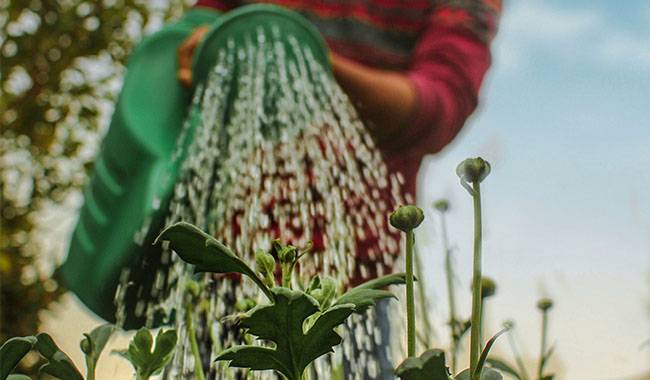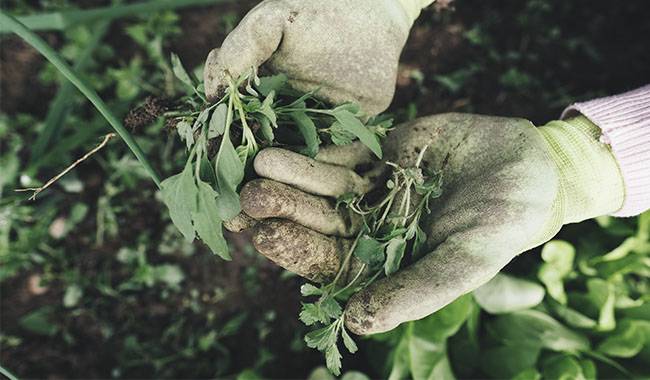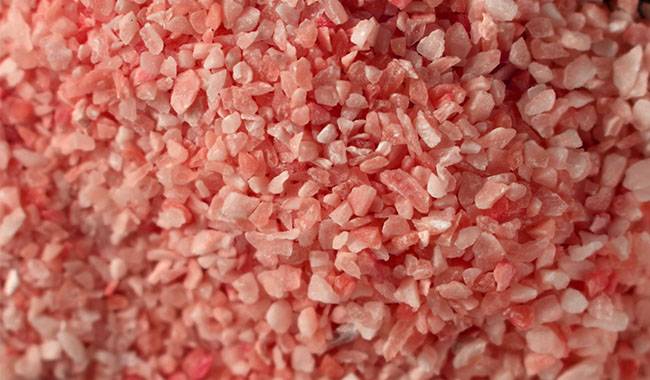
Potassium fertilizer is as important to plants as phosphorus and nitrogen because potassium is an essential element for plants and is one of the three major fertilizer essentials that any organism depends on for its entire life potential.
Therefore, potassium fertilizers should never be neglected, especially since there are many fertilizers containing potassium that you can choose that best suit your soil type and the plants that grow on it.
WHAT DOES POTASH FERTILIZER CONSIST OF?
Potash fertilizer is made from potash ore, which is most often mined in the field. Potash fertilizers can be applied to all types of soils, including black soils, clay soils, sandy soils, and sandstones.
By enriching the soil with potassium, potash fertilizers contribute to the proper transport of sugars in plant tissues, thus providing a full range of nutrients, which in turn leads to the formation of well-developed fruits, berries, and vegetables with a typical, proper flavor.
In addition, potassium as an element directs the growth of leaves, it is abundant in the soil and the plant has a strong immunity against pests and various diseases reliably. Fruits formed on plants grown in potassium-rich soils are usually better preserved during the winter. Interestingly, the potassium contained in potash fertilizers is almost completely absorbed by the plant organism after entering the soil. In addition, potash fertilizers in general and potash fertilizers, in particular, combine well with other minerals to form a complex fertilizer.
There is a wide range of potassium fertilizers, so let us talk in detail about the most popular ones on the market.
POTASSIUM CHLORIDE
Let’s start with potassium chloride. The chemical formula for potassium chloride is KCl. There is a name that scares many people, how so – what with fertilizers containing chlorine, which is toxic to all living things. However, it is not all bad news: in addition to chlorine, this fertilizer contains up to 62% potassium, which is a real advantage. To prevent damage to plants, potassium chloride must be added in advance so that the chlorine is neutralized by the soil.
Potassium chloride is a potash fertilizer suitable for most berry crops, but if you intend to plant a spring berry or fruit crop on the site, then the most suitable time to use it is in the fall.
Pre-planting self-made potassium chloride cannot be made in the planting hole or well and can be very detrimental to the plants.
POTASSIUM SULFATE
This fertilizer has a second name: potassium sulfate. The chemical formula for potassium sulfate is K₂SO₄. The vast majority of gardeners, growers, and even flower growers agree that potassium sulfate is the best potash fertilizer, usually containing up to 50% potassium. Among the large number of fertilizers containing this element, only potassium sulfate does not contain any toxic substances, no chlorine, no sodium, and no magnesium. This fertilizer can be safely applied at planting time in holes or pits in autumn and spring.
Among other things, potassium sulfate allows mixing with other fertilizers, which does not cause any harm to the plant organism. Of course, the dosage should not be exaggerated and is best determined by the requirements of the plant organism, the soil composition, and the time of the year.
Usually, 28-32 g of potassium sulfate per square meter of soil should be applied during shallow plowing in autumn, and the application rate should ideally be reduced to 4-6 g per square meter of the soil before sowing in spring.
Potassium sulfate can be used as a fertilizer not only for open soils but also for greenhouses and greenhouses. The use of potassium sulfate leads to a certain increase in sugar content in fruits and berries, improves their taste, juiciness and even increases the vitamin content.
The application of potassium sulfate improves the immunity of plants and their resistance to various stress factors. It has been noticed that fruits harvested from plants grown on fertilized soils are rarely affected by gray rot after the introduction of potassium sulfate.
POTASSIUM SALTS
There are two substances in this fertilizer – potassium chloride and paraffin. By the way, potash and get a trivial mixture of these two components. The element potassium itself in this fertilizer is about 42%. There are sold and another type of potassium salt – it is potassium chloride, mixed with crinite, which has a lower content of potassium (10%).
Potash is less favorable for fertilization than potassium chloride and is also not recommended for plants, especially those sensitive to chlorine.
Potash is best suited for sandy soils, loamy sandy soils, and peat soils, as these soils are most often deficient in potassium.
It is recommended to apply potash in autumn and to use it as the main fertilizer, but not as a seasonal fertilizer. Typically, 35 to 45 grams of potash should be applied per square meter of soil, depending on the availability of potassium. Application of potash in spring is not recommended, and even less so in summer.
POTASSIUM CARBONATE
A more “popular” name for this fertilizer is potassium carbonate or, more simply, potash. The chemical formula for potassium carbonate is K₂CO₃. In this potash fertilizer, as well as in potassium sulfate, there is a complete absence of such harmful components as chlorine. Potash is considered to be one of the newest potassium fertilizers. This fertilizer contains about 56% of potassium and very little magnesium and sulfur. Potassium carbonate is the most common fertilizer used in potato cultivation.
The dosage of this potash varies depending on the season and the purpose of application. For example, in the form of a top dressing, you can add from 14-16 to 19-21 grams per square meter, in autumn when it is enriched with potassium you can add about 40-60 grams per square meter to the soil, and in spring applications the rate can be increased considerably to bring it up to 80-95 grams per square meter. For late autumn applications, you can add about 20 grams of potash.
Potassium carbonate is produced by processing the potassium salts in the rock. This fertilizer is actually a by-product left over from the processing of chamotte and alumina.
Few people know this, but potassium carbonate can also be obtained on its own, for example from ashes or plants.
WOOD ASH
When it comes to wood ash, it is the most natural and cheapest mineral fertilizer available. It doesn’t contain much potassium, no more than 11%, but it has calcium, boron, iron, copper, and even magnesium & phosphorus. You can apply wood ash to the soil throughout the growing season, whether it’s spring, summer, or fall. However, applying wood ash to the holes at planting is most effective in the spring, in the summer – as a mulch after irrigation, and in the fall – under excavation of the soil.
In summer, in addition to the introduction of dry wood ash, you can make it and dissolve it in the form of foliar sprays, including spraying the plants with this composition. In the winter, wood ash can be used as a fertilizer for greenhouse plants. It is known that wood ash, as the most authentic mineral fertilizer, protects plants from various pests and diseases, in addition to feeding the soil.
CEMENT DUST
Although it appears to be a simple fertilizer, it is a real fertilizer containing potassium. As you may have guessed, cement dust is a waste product from cement production. It is an excellent fertilizer, completely free of chlorine in its composition, and it contains slightly more than 8% potassium.
Cement dust – an excellent fertilizer for highly acidic soils and for plants that are completely intolerant to chlorine in fertilizers. To improve the physical properties of cement dust, this fertilizer is usually mixed with ground peat in an equal ratio of 1:1, that is, for every 2.2lb (1kg) of cement dust you need 2.2lb (1kg) of ground peat.
CROPS THAT NEED POTASSIUM
Having sorted through the most common potassium fertilizers, let’s now look at the crops that need it most.
Let’s start with tomatoes. Typically, to produce one ton of tomatoes, about half a ton of potassium needs to be applied to the soil. These numbers seem like a lot, but they’re really not much. Considering that tomatoes respond extremely negatively to fresh organic fertilizers, increasing vegetative quality to the detriment of yield, the use of potassium fertilizers – is the most logical way to solve this situation.
Adequate potassium in tomato soil significantly improves the quality of fruit, but has little effect on potassium yield, although if it is deficient, you can not talk about a good crop.
About 85-95 grams of potassium per 100 square meters of land should be applied during transplanting of tomatoes, one week after planting 120-130 grams of potassium must be applied to the soil in the same area, and 15-20 days later another 100 pounds of 250-280 grams of potassium fertilizer.
Secondly, cucumber – is a rather demanding crop. In order for cucumbers to fully grow and develop and form a crop, the soil in which they grow must be fertile, preferably even and balanced. In order to obtain a ton of cucumber fruit, you need to make about 99lb (45 kg) of potassium. The required potassium fertilizer is applied under cucumbers in several steps: first before sowing in the open field, then two weeks after emergence and flowering.
Before sowing, there is about 90-95 g of potassium fertilizer per sown grass, the first application is about 150-180 g per sown grass and the second application is about 300-350 g.
The next staple crop requiring potassium fertilization is grapes. In this cultivation method, the soil needs to be fertilized every year, and during the grape growing season, large amounts of potassium are extracted from the soil. However, despite the increased appetite for potassium, the grapes’ hunger can be satisfied by ordinary wood ash. It is allowed to be applied in dry form, about 3.3-4.4lb (1.5-2 kg) per bush. You can also use ashes dissolved in water on grapes, but at this point, the above amount should be dissolved in water and left for 2-3 days.
Next are flowering crops: these plants are deficient in potassium and develop slowly, with partial or complete loss of leaf plates, reduced bud size, and a very short flowering period. Only when the soil is well fertilized with potassium do fully grown shoots appear and form flower buds typical of the species and the plant as a whole.
As a rule, it is recommended to apply potassium fertilizer to flowering plants, e.g. at the time of sowing and during flowering. Fertilize perennial flowering plants in the fall and spring. Use only potassium sulfate and fertilizers containing potassium but not chlorine.
THE BEST TIME TO APPLY POTASSIUM FERTILIZER
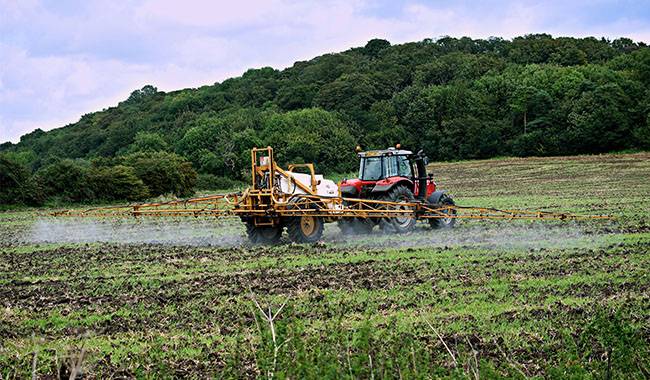
Potassium deficiency usually occurs after a gardener, vegetable grower, or flower enthusiast notices that a plant is deficient in potassium. Potassium deficiency manifests itself on plants as a sudden loss of growth and development, with dull leaves that suddenly turn gray instead of the typical color of the variety of species. In such cases, it is best to use potassium sulfate dissolved in water, which can also be applied as a foliar spray, i.e. simply by pouring the plant directly on the leaves.
If you don’t want to starve your plants, you need to apply fertilizer at the best time before any symptoms of potassium deficiency appear. For example, as basic fertilizer, you can apply potassium in the fall and spring. In addition, potassium fertilizer can be applied by adding potassium sulfate directly to the planting hole at planting time, or to the seedling hole, which is known as a starter fertilizer. Feeding potassium at the initial stage activates root growth, allowing seedlings to take root faster and begin to grow more aggressively.
For example, continuing to apply potassium fertilizer during the summer, at the beginning of maturity, and after harvest ensures that the plant is enriched with the substances needed to form fruit.
Potash fertilizers containing chlorine, such as potash or potassium chloride, should only be applied in the fall and spring; this way, the chlorine can be neutralized in the soil during the winter and will no longer cause damage to the plants in the spring. Fertilizers containing chlorine are good because they contain a lot of potassium, thus saving fertilizer and enriching the soil with more potassium.
Of course, the amount of any fertilizer must be controlled according to the available supply of this or that element in the soil. For example, if the soil is deficient in potassium, instead of immediately applying a large dose of fertilizer, several times the recommended amount, it is better to extend the potassium content of the soil throughout the season, applying it in small doses, preferably in water-soluble form.
Alternating applications of dry and water-soluble potash are allowed and even encouraged. For example, at the beginning of the season, when the soil is rich in moisture, apply potassium sulfate at 12-16 grams per square meter and a month later apply the same dose, but dissolved in water; this will be much more effective than a single application of 20-30 grams of fertilizer.
When using water-soluble fertilizers, it is not necessary to exceed the dose, for example, in the case of a bucket of water for soil, it is allowed to dissolve 35-45 grams of fertilizer for vegetable crops, 500 grams of liquid per shrub, shrubs – one liter per shrub, tree species – half a liter per shrub.
CONCLUSION
Therefore, you can not do without potassium, which is an important element and, therefore, it is also very important to feed them. If the soil is deficient in potassium, high yields and tasty fruits and berries will not be possible at all. Try to use potassium fertilizers correctly: only apply potassium fertilizers with chlorine in autumn, and use potassium sulfate, cement powder, and wood ash in spring and summer.
More related information about fertilizer




